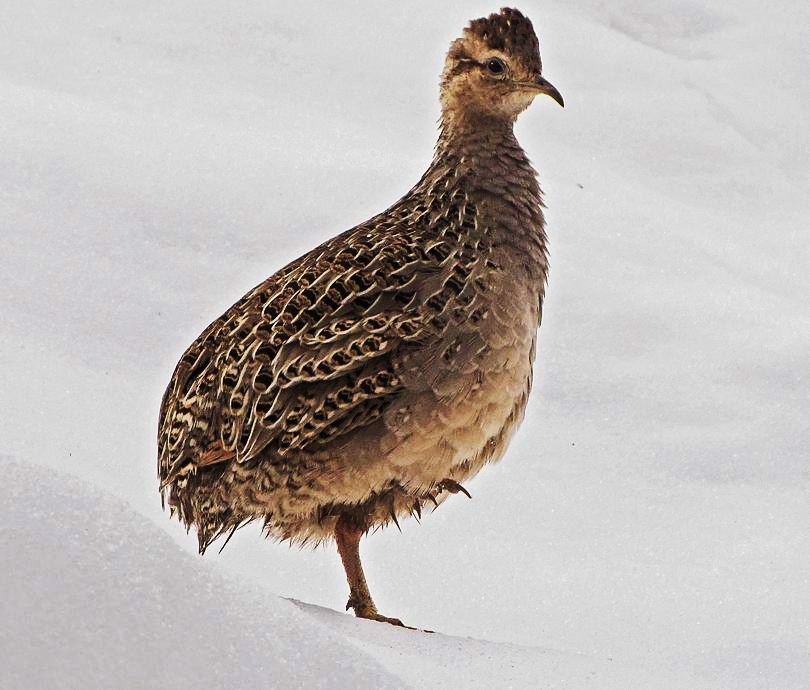Nothoprocta perdicaria
 |
| Photo by Rodrigo Tapia (Neotropical Birds) |
Common name:
Chilean tinamou (en); tinamú-do-Chile (pt); tinamou perdix (fr); perdiz chilena (es); Chilesteißhuhn (de)
Taxonomy:
Order Tinamiformes
Family Tinamidae
Range:
This South American species is mostly found in Chile, from the southern parts of Atacama to Ñuble. It may also be present in adjacent parts of Argentina and was introduced in Eastern island in the 19th century.
Size:
The Chilean tinamou is 29-30 cm long and weighs 160 g.
Habitat:
These birds are mostly found in high altitude scrubland, natural pastures and arid mountain forests in association with such trees as Acacia caven, Porlieria chilensis and the endangered Jubaea chilensis. They can also be found in orchards, agricultural areas, fallow land and even wheat and canola fields. Chilean tinamous are present at altitudes of 400-2.000 m.
Diet:
Chilean tinamous eat a wide variety of seeds as well as ground insects and some crustaceans.
Breeding:
These birds nest on the ground, in a scrape lined with grasses and feathers. There the female lays 5-12 chocolate-coloured eggs, which the male incubates alone for about 21 days. The chicks leave the nest soon after hatching but remain with the parent for several weeks.
Conservation:
IUCN status – LC (Least concern)
This species has a relatively large breeding range and his described as fairly common. Numbers have been much reduced in recent years, especially in the north of its range, where it is now scarce. It is the most prized game-bird in Chile and is hunted with guns and dogs, as well as being trapped illegally. Competition by the introduced California quail Callipepla californica is another possibly threat. Still this species is not considered threatened at present.







